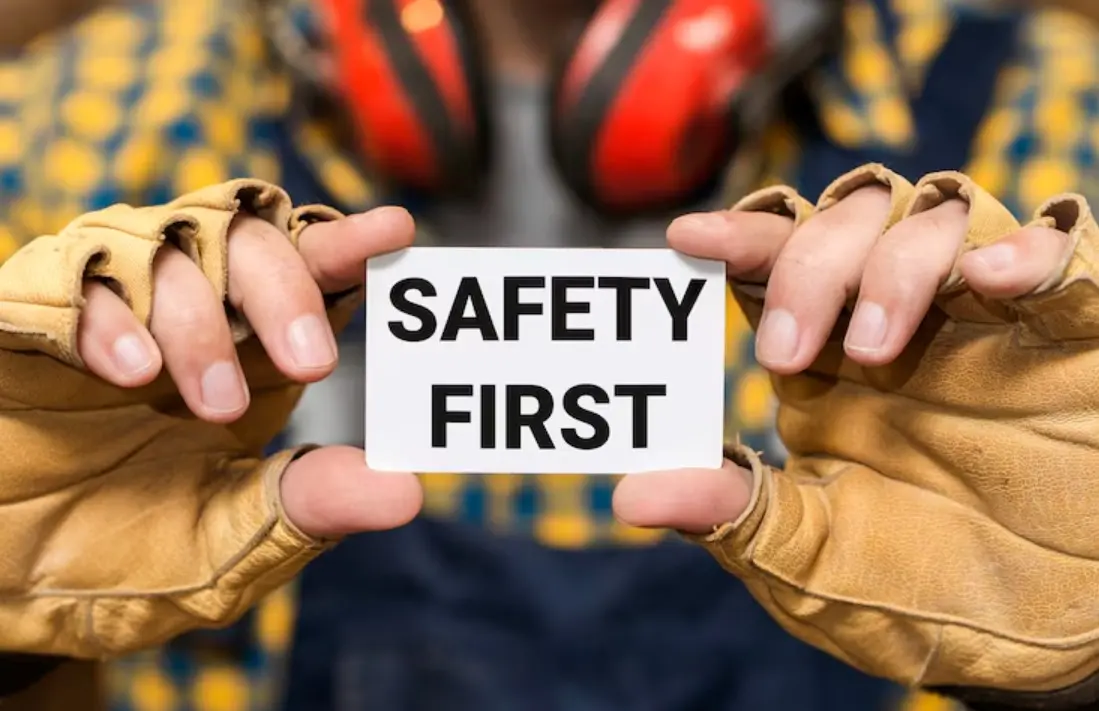Material handling incidents account for nearly one-third of all workplace injuries in warehouses located in the UK. These accidents cost businesses thousands in compensation claims, lost productivity, and regulatory fines. Poor lifting techniques, inadequate training, and rushed procedures create dangerous situations that affect both workers and operations. Understanding proper safety protocols can prevent most of these preventable injuries.
Comprehensive training programmes, like those offered by Insite Training, emphasise the importance of systematic safety approaches in warehouse environments. Professional development in material handling reduces injury rates significantly whilst improving operational efficiency. Workers who receive proper instruction demonstrate better decision-making under pressure and maintain safer working practices. Investment in quality safety education pays dividends through reduced incidents and improved workplace culture.
Understanding the Foundation of Safe Material Handling
Warehouse environments present unique challenges that require specific safety knowledge and practical skills. Workers face constant risks from heavy loads, moving equipment, and time pressures that can lead to making poor decisions. Temperature variations, lighting conditions, and space constraints add complexity to already demanding physical tasks. Recognition of these hazards forms the basis for developing effective safety protocols.
Risk Assessment Fundamentals: Effective material handling begins with thorough risk evaluation before any lifting or moving activity. Workers must assess load weight, shape, and stability whilst considering their own physical capabilities and environmental factors. This preliminary assessment prevents many accidents by identifying potential problems before they occur. Perhaps most importantly, this practice encourages workers to slow down and think through their actions.
Proper Body Mechanics: Maintaining correct posture and alignment reduces strain on the spine and supporting muscles during lifting operations. The back should remain straight whilst bending occurs at the knees and hips, keeping the load close to the body throughout the movement. Twisting motions under load create particularly dangerous stress patterns that lead to serious injuries. These fundamental principles apply regardless of the specific lifting technique being used.
The Five Critical Safety Rules
Rule 1: Always Plan Your Lift Before Moving
Pre-Lift Planning: Every successful lift begins with careful planning that considers the entire movement from start to finish. Workers should examine the load, assess the pathway, and identify potential obstacles or hazards along the route. This planning phase includes determining whether mechanical assistance is needed and ensuring adequate space for safe movement. Rushing through this stage increases accident risk substantially.
The destination area must be prepared and cleared before beginning the lift to avoid awkward positioning or hurried movements. Check that surfaces are clean, dry, and capable of supporting the load being transported. Poor planning often results in workers attempting to adjust their grip or change direction whilst under load. These situations create dangerous stress on the body and increase the likelihood of dropping the item.
Route Assessment: Clear pathways reduce the risk of trips, slips, and collisions during material transport activities. Identify potential hazards such as wet floors, uneven surfaces, or protruding objects that could interfere with safe movement. Adequate lighting ensures workers can see potential problems and maintain proper footing throughout the transport process. Communication with other workers helps avoid conflicts and ensures everyone understands the planned movement.
Rule 2: Use Proper Lifting Techniques
The Safe Lifting Process: Correct lifting technique begins with positioning the feet shoulder-width apart for attaining optimal stability and balance. Squat down beside the load rather than bending from the waist, keeping the back straight and head up throughout the movement. Grip the object firmly with both hands and lift using leg muscles whilst maintaining the natural curve of the spine. This technique distributes weight properly and reduces stress on vulnerable back muscles.
The lifting motion should be smooth and controlled without jerky movements or sudden accelerations that can cause injury. Keep the load as close to the body as possible throughout the entire lift and transport process. Avoid twisting the spine whilst under load by moving the feet to change direction rather than rotating the torso. These principles apply whether lifting from floor level or removing items from shelves or pallets.
Load Limits and Recognition: Understanding personal lifting limits prevents overexertion and reduces the risk of acute injuries or long-term damage. Most workers can safely handle loads up to 23 kg under ideal conditions, but this decreases significantly with awkward shapes or difficult positions. Factors such as frequency of lifting, duration of holding, and environmental conditions all affect safe load limits. When in doubt, use mechanical assistance or request help from colleagues.
Rule 3: Utilise Mechanical Aids When Available
Equipment Selection: Modern warehouses offer various mechanical aids designed to reduce physical strain and improve safety during material handling operations. Forklifts, pallet jacks, conveyor systems, and lifting devices can handle loads that exceed safe manual limits. Proper selection depends on load characteristics, available space, and specific operational requirements for each situation. Training on equipment operation ensures safe and efficient use of these valuable tools.
Maintenance and Inspection: Regular equipment inspection prevents mechanical failures that could result in serious accidents or load damage. Check hydraulic fluid levels, tyre condition, and safety features before operating any mechanical lifting device. Report defects immediately and remove faulty equipment from service until proper repairs can be completed. This proactive approach prevents minor issues from developing into major safety hazards.
The following equipment categories serve different material handling needs:
- Powered Equipment: Forklifts, electric pallet jacks, and scissor lifts for heavy loads and high stacking
- Manual Tools: Hand trucks, dollies, and lever bars for moderate loads and tight spaces
- Ergonomic Aids: Lifting belts, grip assists, and posture supports for repetitive tasks
- Conveyor Systems: Belt conveyors, roller systems, and sorting equipment for continuous material flow
Rule 4: Maintain Clear Communication
Team Coordination: Material handling often involves multiple workers who must coordinate their actions to ensure safety and efficiency. Clear verbal communication prevents misunderstandings that could lead to dropped loads or worker injuries during team lifts. Establish signals and procedures for starting, stopping, and changing direction during coordinated movements. One person should take responsibility for directing the operation and making safety decisions.
Hazard Reporting: Workers must report unsafe conditions, damaged equipment, or near-miss incidents to prevent future accidents. This communication helps identify patterns and systemic problems that require management attention and corrective action. Encourage open reporting without fear of blame to create a culture where safety concerns are addressed promptly. Documentation of incidents provides valuable data for improving safety procedures and training programmes.
Emergency Procedures: All workers should understand emergency procedures for accidents involving material handling equipment or injuries during lifting operations. Know the location of first aid supplies, emergency contacts, and evacuation routes in case of serious incidents. Quick response to injuries can prevent complications and reduce the severity of outcomes for affected workers. Regular drills ensure everyone remains familiar with emergency protocols.
Rule 5: Regular Training and Skill Development
Ongoing Education: Material handling safety requires continuous learning and skill development to address new challenges and evolving workplace conditions. Regular training sessions reinforce proper techniques and introduce new safety procedures or equipment modifications. Workers benefit from refresher courses that address common mistakes and provide opportunities to practice correct methods. This investment in education demonstrates management commitment to worker safety and operational excellence.
Skills Assessment: Periodic evaluation of worker competencies ensures that safety standards are maintained consistently across all shifts and departments. Identify workers who may need additional training or support to perform their duties safely and effectively. These assessments also help recognise exceptional performers who could serve as mentors or safety champions within their teams. Regular feedback helps workers understand their progress and areas for improvement.
Certification Requirements: Many material handling positions require specific certifications or training credentials to operate equipment safely and legally. Forklift operation, crane operation, and other specialised equipment typically require formal certification programmes that include both theoretical knowledge and practical skills demonstration. Maintaining current certifications ensures compliance with regulatory requirements and demonstrates professional competence. Employers must verify certification status and provide renewal training as required.
Creating a Safety-First Culture
Leadership Commitment: Management support for safety initiatives creates an environment where workers feel comfortable following proper procedures without pressure to compromise safety for productivity. This commitment must be demonstrated through adequate staffing, proper equipment provision, and recognition of safe working practices. When supervisors prioritise safety in their daily decisions, workers understand that following procedures is expected and valued. Clear policies backed by consistent enforcement establish safety as a core organisational value.
Peer Responsibility: Workers have a responsibility to look out for their colleagues and intervene when they observe unsafe practices or conditions. This peer accountability system creates multiple layers of safety oversight beyond formal supervision and management systems. Encouraging workers to speak up about safety concerns helps identify problems before they result in accidents or injuries. Team-based safety initiatives foster cooperation and shared responsibility for maintaining safe working conditions.
Continuous Improvement: Safety programmes must evolve based on experience, incident analysis, and changing workplace conditions to remain effective over time. Regular review of procedures, training content, and equipment specifications ensures that safety measures keep pace with operational changes. Worker feedback provides valuable insights into practical challenges and potential improvements that may not be apparent to management. This collaborative approach to safety development creates more effective and sustainable programmes.
Conclusion
Implementing these five critical material handling safety rules creates a foundation for reducing workplace injuries and improving operational efficiency in warehouse environments. Workers who understand proper lifting techniques, utilise appropriate equipment, and maintain clear communication significantly reduce their risk of injury whilst contributing to overall workplace safety. Regular training and skill development ensure that safety knowledge remains current and effective as workplace conditions evolve.
The benefits of comprehensive safety programmes extend beyond injury prevention to include improved productivity, reduced insurance costs, and enhanced worker satisfaction and retention. Companies that invest in proper training and safety equipment demonstrate their commitment to worker welfare whilst protecting their operational capabilities and reputation. Take action today by evaluating your current material handling practices and identifying areas where these safety rules can be better implemented throughout your organisation.
Also Read-The Long-Term Cost of Letting Your Car’s Exterior Go Unprotected








